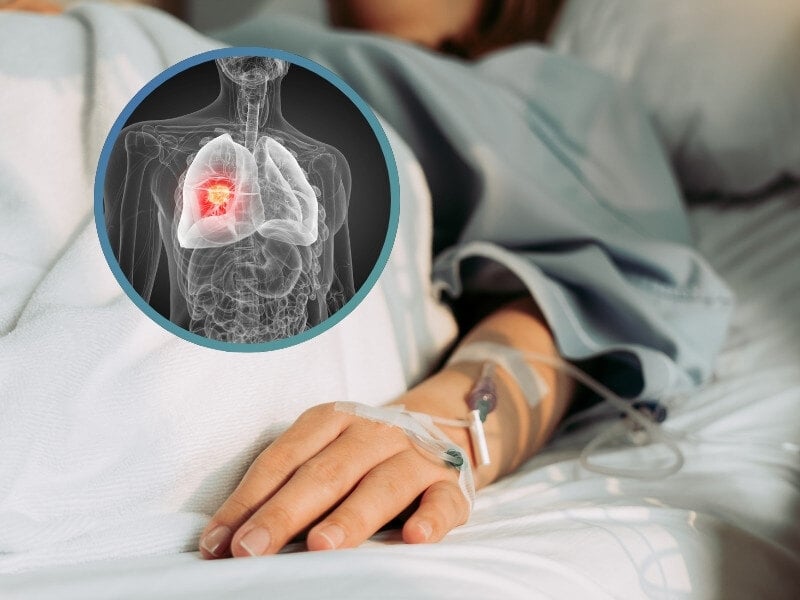Diagnostic Biomarkers Identified Through Multi-Omic Approaches in Chronic Decline and Crohn’s Disease

Diagnostic biomarkers are a key device for monitoring disease spread and progression. Multi-omic technologies allow researchers to investigate the biology of age-related diseases over time to identify key drivers of ageing, which can potentially be a path for drug discovery programs. Our Biomarkers UK 2023 conference explored some of the applications of biomarkers in monitoring disease spread and prognosis, with a specific focus on how spatial biology approaches can be used to help quantify biomarkers to aid validation and target monitoring. Regardless of the disease being investigated, spatial imaging and multi-omic approaches can be invaluable to research.
Using Multi-Omic Technologies to Investigate the Biology of Ageing
The biology of ageing is a key focus for many working in the biomarkers field – as the UK’s population gentrifies, more people are likely to be diagnosed with chronic ailments.The natural process of ageing leads to a decline in both physical performance and reduced resilience. Additionally, ageing biology has a strong interplay with ageing physiology. Biomarkers are key to understanding that ageing process and the various effects it may have on diseases.
- The Future of Spatial Technology, Analysis, and Imaging
- Biomarkers in Precision Medicine Approaches for Oncology: Overcoming Obstacles to Usage
- Improving Approaches for Patient Selection Using Immuno-Oncology Biomarkers
Multi-omic technologies can be used to investigate the biology of related diseases associated with ageing. They can also be used to identify key pathways associated with ageing in conjunction with diagnostic biomarkers. In turn, this could offer insights into ways to improve the healthspan of patients as well as their lifespan. ‘Healthy ageing’ in this context is defined by the WHO as ‘the process of developing and maintaining the functional ability that enables wellbeing in older age’.
Accelerated ageing can place an increased burden on healthcare services and the families who increasingly have to care for their relatives as their independence lessens. Researchers and healthcare provers know there are certain triggers in a patient’s life that can age them. said Marshall. If they can change that trajectory of ageing, they could potentially increase that resilience and help to afford patients with an improved quality of life.
Diagnostic Biomarkers Associated with Ageing
To help understand the trajectory of ageing, some companies have been looking at ageing-associated biomarkers. An early case study run by the Medicines Discovery Catapult took plasma samples of donors and investigated gene expression within those samples to assess their biological age. RNA biomarkers within these samples were investigated through the Nanostring nCounter platform.
By recording a selection of multi-spatial and multi-omic signals, researchers can combine these to look at these drivers of ageing and understand a bit more about crucial pathways involved in ageing and disease. A critical element of this process has been the creation of the Innovative Therapeutics Ageing Consortium, put together as part of the UKSPINE Consortium. The organisation has identified 600 key targets in ageing which could have an impact on slowing the trajectory of disease.
These 600 targets were narrowed down to 22, which progressed into a drug discovery pipeline. The Medicines Discovery Catapult picked up four of these and started to build evidence of them in ageing. A key area of focus here was the investigation of how these targets were expressed in conventionally healthy patients. While more needed to be done to qualify whether the target was protective or age-related, a statistically significant correlation was identified in the process of researching chronic diseases. Another approach involved using mass spectrometry – namely, DESI imaging – to look at lipids across the tissue in ALS patient samples.
Applying Spatial Proteomics to Immune Populations Associated with Crohn’s
A related approach to spatial proteomics in biomarkers involves the use of assay optimization and image analysis to investigate immune mechanisms and inflammatory responses. Priyank Patel is a Senior Scientist in the Molecular Histopathology Group in the INR Department at Boehringer Ingelheim. A key research focus for him involves the implementation of spatial proteomics to understand Crohn’s disease – a lifelong condition where parts of the body’s digestive system become inflamed. It causes lesions in the gastrointestinal tract as a result of this inflammation.
As Patel explained, myeloid cell populations are involved in controlling this inflammation from its onset, when there is bacterial dysbiosis in the tissue. “Macrophages, in particular, activate the innate immune-sensing mechanisms and initiate the inflammatory response against microbes,” said Patel. They also play a critical role in resolving inflammation by initiating tissue remodelling, wound healing, and epithelial regeneration. Throughout the three phases of inflammation, macrophages change their differentiation and phenotypic state accordingly to accomplish their functions.
To help develop an understanding of these changes in macrophages, spatial technologies are being used to investigate their behaviour. The spatial proteomics workflow involves assay optimization and FFPE (Formalin Fixed, Paraffin Embedded) tissue staining in tandem with image analysis, cell classification, and data analysis. Common platforms using mass cytometry or immunohistochemistry techniques for hi-plex immunohistochemistry require extensive assay development to ensure sensitivity and specificity for each target.
Exploring Approaches to Data Interpretation
Developing an understanding of the presence of immune cells and inflammatory responses involves identifying the cellular composition, phenotypic heterogeneity and spatial neighbourhoods observed in the tissue. Patel’s computational analysis workflow accomplishes this by dividing tissues into smaller fields of view, performing hierarchical clustering and cell classification in a semi-supervised manner.
This study identified five different macrophage phenotypes, including both homeostatic and inflammatory phenotypes. Spatial analysis was performed to examine the distribution and clustering of neutrophils and T cells around macrophages in different areas of inflammation, with pathological evaluation helping to validate the computational analysis results and distinguish between chronic and acute inflammation.
As Priyank explained, integrating pathological evaluation with spatial proteomics focused the drug discovery efforts for the target of interest in maintaining the epithelial barrier regulation. In this way, spatial analysis is increasingly becoming important in understanding cellular composition and inflammation in the context of chronic health issues such as Crohn’s disease.
Want to read more about the applications of multi-omics techniques in biomarker discovery and analysis? Head over to our Biomarkers newsfeed for regular updates on the latest trends in the field. If you’d like to learn more about our upcoming Biomarkers UK conference, visit our event website to download an agenda and register your interest.






.png)

